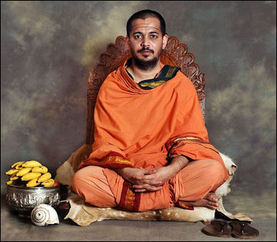 How could the Indo-Aryans have been from somewhere else if it is not recorded in their traditions? This is a common question that comes form many Indians. It is an entirely Indo-centric perspective. This is a description, not a critique. After all, the Indo-European Greeks have no lore of migration in the Hesiod. Many, such as the Athenians, consider themselves autochthonous. The Egyptians have no lore of migration. In contrast, the Sumerians seem to have had legends of migration from the “south” (perhaps marshland to the south of Mesopotamia proper). And the oldest Sumerian city does happen to be the most southern one (Eridu). The Norse have no history of migration from elsewhere, but it is almost certainly a fact that the Nordic Bronze Age cultures came out of the post-Bell Beaker and Corded Ware societies after 2000 BC, whose roots lay ultimately to the south and east.
How could the Indo-Aryans have been from somewhere else if it is not recorded in their traditions? This is a common question that comes form many Indians. It is an entirely Indo-centric perspective. This is a description, not a critique. After all, the Indo-European Greeks have no lore of migration in the Hesiod. Many, such as the Athenians, consider themselves autochthonous. The Egyptians have no lore of migration. In contrast, the Sumerians seem to have had legends of migration from the “south” (perhaps marshland to the south of Mesopotamia proper). And the oldest Sumerian city does happen to be the most southern one (Eridu). The Norse have no history of migration from elsewhere, but it is almost certainly a fact that the Nordic Bronze Age cultures came out of the post-Bell Beaker and Corded Ware societies after 2000 BC, whose roots lay ultimately to the south and east.
Finally, as I have written elsewhere, in the space of less than 200 years the Celtic Britons of what became England abandoned their native language and cultural memory and replaced it with that of pagan Germans. We know from both fine-scale modern genetic analysis of the British Isles, as well as ancient DNA, that the majority of the ancestry of the modern English dates to the period before the arrival of the Anglo-Saxons. And yet pre-Germanic language and cultural folkways had only a trivial impact on the English. Even royal houses, such as those of Wessex, who were likely of native British origin (the earlier rulers in the genealogy have Celtic forenames!) “retconned” their origin to be from the Germanic god Wotan.
If, as I believe, the Indo-Aryans are rooted primarily in the Sintashta culture which flourished around ~2000 BC, and the Vedic culture flourished in South Asia by ~1500 BC, that allows for only five centuries to “forget.” Your mileage may vary, but 20 generations seems a bit short to forget this when these people were punctilious in matters of antique ritual.
To answer this conundrum, I propose something entirely conjectural and hypothetical, but not impossible: the Brahmin caste emerged as a fusion of Indo-Aryan ritualists and pre-Aryan priests. In terms of total ancestral contribution, the latter is actually more preponderant than the former. Though the language of the former is dominant, most people accept that the Vedic culture was somehow synthetic. A hybrid. Perhaps the pre-Aryan priesthood was culturally more dominant than we may suppose, and as its roots were deeply indigenous, they promoted the ideology that their hybrid caste was in India in toto immemorial?